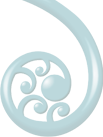Hand, elbow and shoulder pain
Pain in your shoulder, elbow, forearm or hand is commonly the result of repetitive tasks during sport or at work, or arises from falling accidents or excessive strain while lifting objects.
The principle of interconnectivity

One fundamental principle of osteopathy is the interconnectivity of the body’s parts and function, so that they cannot be assessed in isolation and must be considered and treated together. This is what we mean by holistic healthcare. The hands, arms and shoulders provide a number of excellent examples of the complexities that osteopaths deal with to return you to health, and of how pain in one part of your body may be arising from dysfunction in another connected part that is sometimes further away than you might realise.
Repetitive strain injury
Repetitive strain injury RSI (also known as occupational overuse syndrome) can affect a variety of people including computer users, musicians and sports people. The problem usually results from prolonged periods of contraction or shortening of the muscles so that they cannot fully relax even when at rest. This causes reduced circulation, and micro-tears can develop leading to inflammation in the affected tissues. This condition usually appears gradually and can become quite debilitating. It's important to treat this condition in a holistic manner due to its multifactorial nature, and to try to treat all tissues under stress to restore circulation and help the healing process. Your doctor may prescribe Voltaren or other medication, however these only block the sensation of pain or reduce inflammation, they won't fix the problem. That's why it's a good idea to see an osteopath as we can we treat the underlying condition and advise you of things you can do to help for long-term improvement.
Thoracic outlet syndrome
Thoracic outlet syndrome is a specific type of RSI that provides a powerful illustration of how pain in one part of your body may be caused by dysfunction in a distant part. This condition can cause pain, pins and needles and coldness in the hands, resulting from a lack of blood supply. However, the root cause of this pain is not in the hands. Rather, the condition arises from nerves and blood vessels being compressed between the collarbone, the chest muscles and the ribs, affecting blood vessels that run down the arm to the hand. Your osteopath will be able to identify what is causing the compression under your collarbone and work towards increasing the space around the neurovascular bundle. This could involve releasing uneven muscle tension, freeing restricted joints, and unwinding tension in the interconnective fascial tissue of the upper back, shoulders, neck and arms.
Carpal tunnel syndrome
Another condition we commonly see in the clinic that can cause discomfort in the hand, but which has a different origin, is carpal tunnel syndrome. The underlying cause of the symptoms in this condition is a compression of the median nerve that passes through the wrist to the hand. Compression on the nerve can be the result of fluid retention and inflammation, and can therefore be helped by improving lymphatic drainage in the arm. Rest from the aggravating factors is also advised. This should be the first line of treatment before cortisone injections or surgery.
Tennis elbow and golfer's elbow
Tennis elbow and golfer’s elbow are caused by an inflamed tendon of muscles in the forearm which control finger and wrist movement. These muscles can develop micro tears after a repetitive action. In tennis elbow it involves the extensor tendon of the forearm and in golfer’s elbow it involves the flexor tendon. Repetitive tears can form scar tissue when they heal and that puts pressure on the blood vessels and nerves. This can cause further degeneration and chronic pain. Tennis elbow and golfer’s elbow can result from a sudden or repetitive motion. The elbow is usually tender to touch, lifting will be painful and the pain can often radiate to the wrist and thumb. The inflammation may subside in 6-12 weeks and our treatment is directed at breaking down the scar tissue and increasing the blood supply and lymphatic drainage. Strengthening and balancing the surrounding muscles and correcting any joint restrictions will help to prevent this condition recurring and help you heal faster. Rest and stretches are also advised and a good sports rub with beneficial supplements will help.
Shoulder injuries
The shoulder joint is a very complex area and injuries can involve numerous tissues when injured. Rotator cuff strains are common and can involve any of the four rotator cuff muscles (infraspinatus, supraspinatus, teres minor and subscapularis). These muscles help to stablise the shoulder joint and are commonly injured from a fall onto the arm, lifting heavy weights or sports such as cricket, kayaking and swimming which involve a lot of shoulder rotation. The pain can be quite severe especially when moving the arm or when lying in bed. This type of soft tissue strain can take 6 weeks or longer to fully resolve depending on whether it is a strain or a tear. Again, to stop this injury from recurring a balance in the muscles around the shoulder joint needs to be established. The surrounding area including the neck or upper back may need to be treated in order to achieve a stable balance in these muscles. As osteopaths we can help advise you on controlling the local inflammation as well as treating the cause of the problem.



